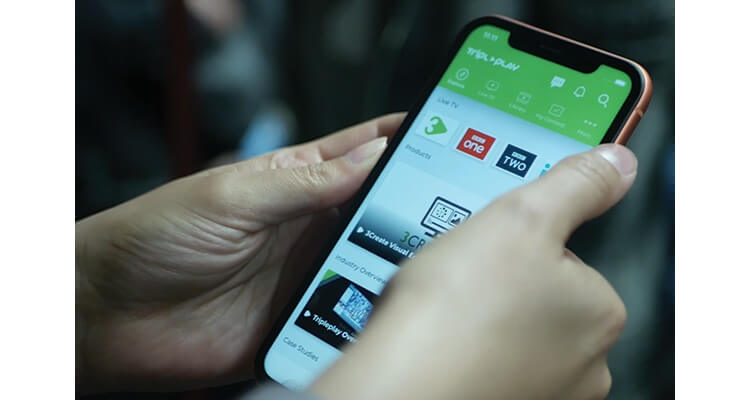Interfacing AV

As you may know, I write a lot about the human aspects of technology and the importance of connecting to people’s emotions or sensibilities while using that technology. I consider these aspects essential “tools of the trade.” Well, the interface — and how humans interact with the systems we design and install — is just as important; it’s typically the first part of the system a person will use and can set the tone for the rest of the experience.
These days, technology is typically automated — the technology reacts to humans being in the room. It can also be part of an experience you sit or stand in and interact with viscerally. Sure, many systems still interact directly with human touch, and we must select what we need and want to do with the installed AV systems. This is still the primary way to control our installed technologies.
For the foreseeable future, our primary control interface is a touch screen. There are still some keypads out there, but for this article, we’ll focus on touch screens and save keypad terminology and its impact on interaction for later.
Every integration firm out there has a programmer on staff, or at least they have one on contract. Programming is critical to the success of an AV system where a single user touch directs the experience. But often, and in almost all cases, finding an AV integration firm with an artist or graphic designer on the team is very rare. Why is that?
Simple, you say? The programmer does our interfaces.
Well, here’s the problem with that answer and why you, as a leader or ownership group, should ask for more. Often, programmers like engineers come from a background of “what can this do?”. A designer and artist will ask, “What should this do?” There’s a big difference between the two questions; both answers have entirely different outcomes.
A programmer is typically impressed by the system’s abilities and believes it creates value to program all the capabilities possible into the touch screen for end users to navigate. While more often than not, the user doesn’t want to do that much work — no matter how cool the feature may be. The typical user considers “less is more” when it comes to the interaction and control of the installed systems. Remember the three-touch rule to get your outcome — it’s amazing the number of times I’ve arrived to fix a failed project, and an executive says, “I just want to push a big red button and have it work — that’s it.”
The main thing to remember — and I’ve touched on this before — is clients and their employees have a job to do. They are not AV professionals and don’t want to be AV professionals. They’re professionals in their expertise and use AV to help connect, collaborate or translate complex ideas to other employees and teams locally and remotely. Their time is money. Ownership groups certainly don’t want to see their professionals “wasting” time setting up an AV system when they should be working on the task at hand.
So, now you can see why interfacing AV and related technologies is so important and requires a UI/UX expert on the team to properly design the interface (UI) based on user experience (UX) requirements. And that’s before any programming happens (and sometimes, preferably even before an engineered system is created or even designed). To design the system, you should understand the user requirements, which UX will help flush out. You can save clients hundreds if not thousands of dollars on wasted equipment, engineering and programming time by nailing the question: “What should this system do?”
Here’s the most common example for integration firms: In many instances, a programmer goes to the site on commissioning day, plugs into the network and starts to run code based on a schematic they had received weeks earlier. They start programming based on their personal preferences, experience and capabilities of the installed system or some universal UI they made whenever for a similar project. Now, a few minutes into tweaking programming and testing the UI, the client walks in, and low and behold, questions arise about the use and abilities as they look at what is happening on the touch screen(s).
This is when it all goes off the rails. Our friend scope creep starts to come into the picture. Because no one had designed the interface ahead of time, reviewed features and functions, designed a simple layout with client approval, then wrote a programming specification with screen layouts and assets – the programmer is now stuck in a bad spot. This spot will cost the integrator time and money, while also aggravating the client and programmer as the goal posts move around on game day. This is a quick line to never seeing the 10% hold back and leaving a legacy of unhappy clients.
For all the programmers out there, I will state that this situation is certainly not the programmer’s fault! (Even though they typically take the heat for it.) Nor is it the salesperson’s, PM’s or engineer’s fault either. All these AV professionals are experts in their area — so why would the visual design intent and user experience success be left to no one? Remember, this is the primary point of use of our systems for the client.
Interfacing should be the role of a designer and artist who is an expert in understanding how people interact with touch screen technology. Someone who understands the rules of proper visual design aesthetics, colorimetry, button sizing and scale, font type and consistency, pixel-per-inch relationships, etc. They need to fully understand the rules of interaction within that visual aesthetic to successfully do the system justice.
With touch screens now in everyone’s pocket, the rules of interfacing have changed significantly in the past 20 years. So don’t think it’s as easy as reading Crestron, Extron or similar interfacing guidelines. These are based in our silo — not the piece of hardware people use the most, like a smartphone or tablet. We must use Google, Android and Ben Shneiderman’s eight golden rules as starting points for understanding UX and UI design. These resources at least get you to the lowest common denominator when designing UI.
Once integration firms start to see the success of the projects where proper UI has been achieved, the cost of having a trained visual interaction designer on staff will slowly start to fade as an expense. When programmers have a written programming specification to reference with screenshots, layouts and graphic elements ready to go, the savings in efficiency really start to add up. Let alone the standards and legacy of successful projects you leave behind. The cost is negligible. Trust me; I do this for clients and integration firms all the time, and the results after years of doing it speak for themselves.
At the end of the day, the interface is most likely going to be the only interaction point for the end user. As time passes, they won’t judge the tidy rack; they won’t judge the laser cut rack face plates or cool projector lift. They will judge whether they can use the system quickly and efficiently and achieve a desired result. Does the interface reflect their brand, their use, their needs — is it elegant, sleek and sexy? Does the interface match other visual design elements in their built environment? Can they set up and use the systems we purchased without needing a manual or teacher — is it intuitive?
Once you start answering these questions for clients, you’ll start to see what a properly interfaced AV system can provide to your clients and your firm. You can start to create branded experiences tailored to clients that provide unparalleled ease of use while looking modern, clean and elegant. Never underestimate the power of visual design and ease of use when it comes to interfacing with AV. Your client won’t; it’s the one thing they’ll use every day at the office and at home. So maybe it’s time to invest more time and money in interfacing your AV.





